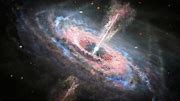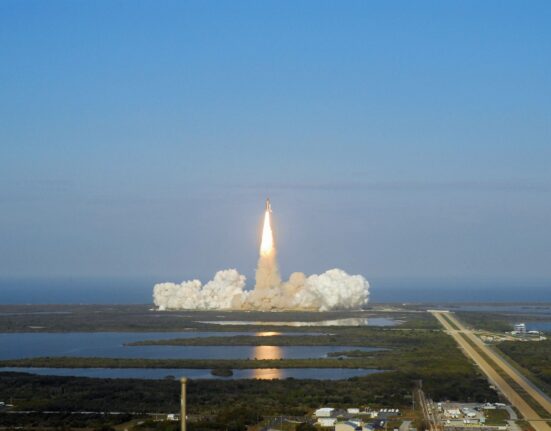In the vast expanse of the cosmos, a mesmerizing celestial dance unfolds, captivating astronomers and stargazers alike. Picture this: two colossal galaxies hurtling through space at mind-boggling speeds, destined to collide in a spectacular cosmic showdown. This isn’t just any ordinary collision; it’s a “cosmic joust
” taking place 11 billion light-years away in the constellation Cetus.
The dramatic encounter was recently captured by the powerful lenses of the European Southern Observatory’s Very Large Telescope and Atacama Large Millimeter/submillimeter Array in Chile. The image reveals a breathtaking scene where two galaxies are on a collision course, their fates intertwined in an epic celestial battle.
At the heart of this cosmic clash lies a quasar, a luminous beacon in the darkness of space. Quasars are known for their intense brightness, fueled by supermassive black holes devouring matter at staggering rates. In this galactic duel, one of the colliding galaxies hosts a quasar named J012555.11−012925.00, radiating with unparalleled brilliance.
As these titanic galaxies converge, the quasar’s radiation pierces through its neighbor with ferocious intensity, akin to medieval knights jousting in days of old. The onslaught of radiation disrupts the delicate balance within the victim galaxy, hindering its ability to form new stars and altering its internal structure irreversibly.
Astronomers marvel at this rare spectacle unfolding before their eyes. Sergey Balashev from the Ioffe Institute in St. Petersburg expresses his awe at witnessing firsthand the transformative power of a quasar’s radiation on a neighboring galaxy’s gas composition: “
Here we see for the first time the effect of a quasar’s radiation directly on the internal structure of the gas in an otherwise regular galaxy.”
The aftermath of this galactic collision is profound. The once-vibrant companion galaxy is left depleted and scarred as it loses its gas reservoirs to fuel its supermassive black hole counterpart residing within the quasar. Balashev notes that such mergers between galaxies play a crucial role in feeding supermassive black holes at their cores, sustaining their voracious appetites for cosmic matter.
Beyond this stunning snapshot of celestial turmoil lies deeper scientific inquiry and discovery. Videos released by the European Southern Observatory provide further insights into this extraordinary event, offering viewers an immersive experience into the dynamics and repercussions of galactic collisions on astronomical scales.
This cosmic joust serves as a poignant reminder of nature’s grandeur and complexity, showcasing both destruction and creation on an astronomical canvas billions of light-years away from our humble vantage point on Earth. As we gaze upon these distant celestial phenomena, we are reminded of our place in the vast universe—a tiny speck amidst cosmic giants locked in eternal dances across space and time.








Leave feedback about this